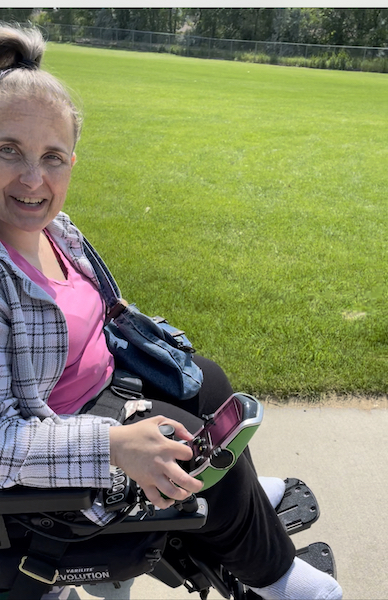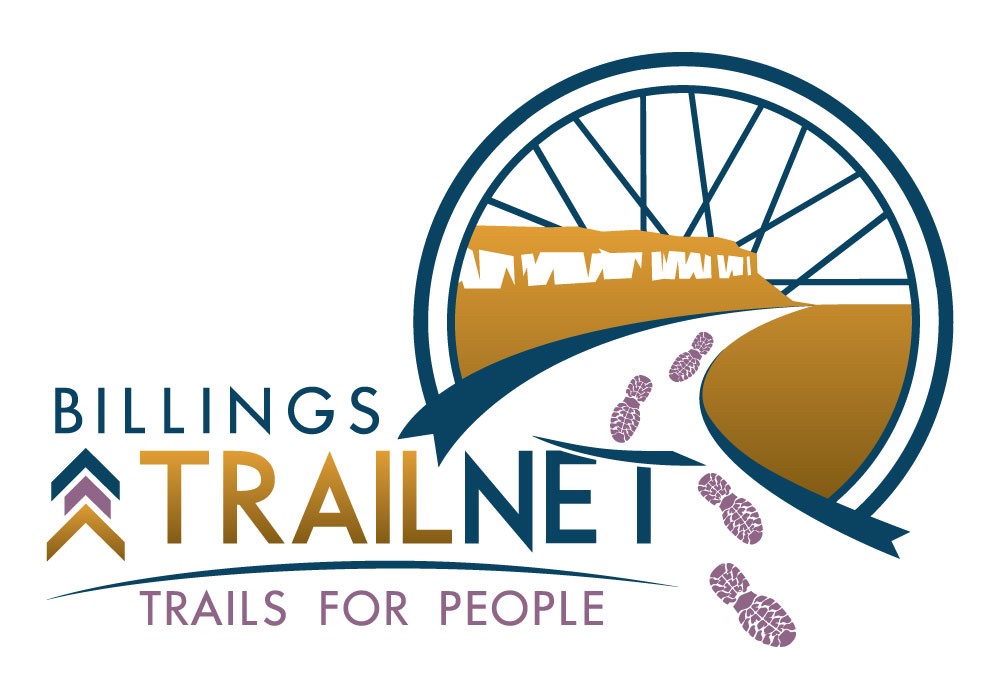
Kimberly uses one trail often to go to the doctor and run errands. It’s pretty straightforward to get from her home to the clinic, and she loves the independence of getting there on her own, meeting people along the trail, and getting outside for some fresh air while she travels.
But as we “trailed” together and chatted, it became clear that while trails and bikeways provide a means of transportation and enjoyment for her and others using wheelchairs, they also pose some dangers which may be fairly easy to overcome.
Add directional and distance signs to trails and bikeways
Kimberly says that she would like to venture further but faces a few challenges in navigating through town. While having a map is helpful, it would improve her confidence if the trails had directional signs to give her an idea of how far to the next trail, which direction to take to major destinations, and whether she can get to them without interfacing with traffic.
Position pedestrian light activation buttons for better accessiblity
The pedestrian activated lights which stop traffic on streets that intersect trails, such as those on Monad, Central and Broadwater, are wonderful additions to help make trail and bikeway users safer. They are very effective at altering traffic to stop when someone is crossing. (Note that the button only signals the traffic in the directional lanes closest to the button. Once a pedestrian is in the refuge island, they must push the next button to alert the traffic coming the other direction).
But in some cases, the button is positioned so close to the traffic lane that someone in a wheelchair must put their feet into the traffic lane to reach the button. This is especially dangerous because, as wheelchairs are lower to the ground than most car windshields, they may not be noticed by larger, fast-moving traffic.
Bringing the signals closer to the middle of the median/refuge island would be safer and would provide more continuous travel for people crossing the street.
Recognize that it’s not just bicyclists that use bike lanes, and add more of them
People using wheelchairs often feel safer riding in bike lanes rather than sidewalks for several reasons: 1) drivers backing out of driveways often don’t see them on sidewalks; 2) sidewalks which do not have ramps are impossible to access; and 3) sidwalks can suddenly become a hazard when they are broken up with roots, have mailboxes situated in the sidewalk, or other temprorary barriers such as garbage cans on pickup days.
Thank you Kimberly, for chatting and providing some insight into what it’s like to ride a wheelchair in Billings. We hope to see you on more trails soon!
